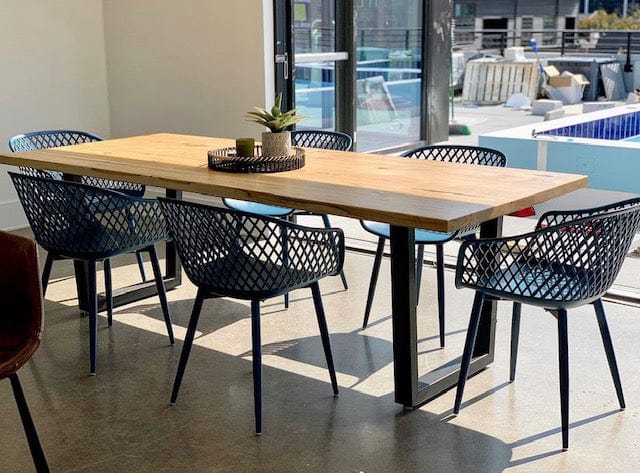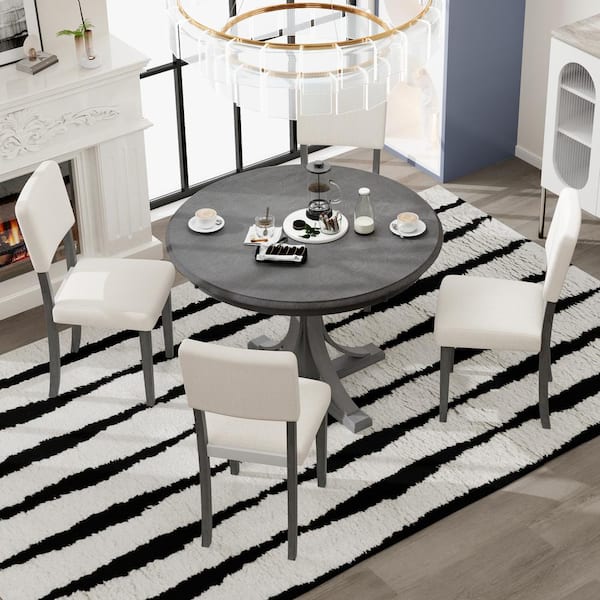The Impact of Dining Room Table Legs on Your Table's Overall Design
The Impact of Dining Room Table Legs on Your Table's Overall Design
Blog Article
Exactly How to Pick the Perfect Dining Area Table Legs for Your Home Decoration
Picking the perfect eating space table legs is a nuanced procedure that needs mindful consideration of various aspects, including your room constraints, aesthetic choices, and sensible needs. The interplay in between dimensions, styles, and products can significantly influence the ambiance of your dining location, making it vital to approach this choice methodically. As you contemplate the myriad options offered, it ends up being clear that the ideal selection expands beyond mere look; it can improve your general dining experience. What elements should you prioritize to guarantee your choice matches your home's unique character?
Assess Your Eating Space
Assessing your eating area is essential for picking the right table legs that match both appearances and performance. Begin by measuring the measurements of your dining location, including ceiling elevation, floor room, and distance to other furnishings. This information will certainly assist determine the proper size and elevation of your dining table, which straight influences the selection of table legs.
Following, consider the design and layout of your dining room. An open-concept layout may benefit from table legs that use aesthetic lightness, such as slender steel or acrylic alternatives. Conversely, a much more typical setup might require strong wood legs that supply a feeling of durability.
Review the existing color palette and products in your eating area. Balancing the table legs with these components develops a natural appearance that improves the general design.
Eventually, a complete analysis of your eating area will guide you in making an informed choice, making certain that your table legs not just improve the visual appeal but additionally offer useful purposes.
Consider Your Style Preferences
When picking dining-room table legs, it is important to assess your individual design preferences, as they significantly affect the general aesthetic of your dining room. Your option of table legs can either complement or comparison with existing decor, making it vital to align them with your preferred interior decoration theme.
If your home leans in the direction of a contemporary aesthetic, take into consideration streamlined metal or minimal wooden legs that provide a tidy, uncluttered appearance. For a much more conventional approach, ornate wooden legs with detailed carvings can include a touch of sophistication and sophistication. Industrial designs take advantage of durable, basic materials such as recovered wood and metal mixes, mirroring a sturdy appeal.
Furthermore, farmhouse and rustic styles frequently favor sturdy, beefy legs that stimulate a sense of heat and comfort. Alternatively, if your decoration is diverse, you might select unusual shapes or a mix of products to develop visual rate of interest.

Evaluate Product Options
The choice of material for dining space table legs plays a crucial role in both toughness and visual allure. Common materials include wood, metal, and composite options, each offering unique attributes that can affect the general appearance and long life of your table.
Timber is a timeless selection, recognized for its heat and versatility. Hardwoods like oak and walnut provide extraordinary stamina and can be completed in different spots to match any type of design. Softwoods like pine are more prone to damages and scrapes, making them less ideal for high-traffic locations.
Steel legs, commonly crafted from steel or light weight aluminum, radiate modernity and industrial charm. They are very sturdy and immune to use, making them appropriate for families with children or regular events (dining room table legs). Additionally, steel can be completed in various shades, improving the personalization possibilities
Composite products, such as MDF or laminate, offer affordability and varied styles. While generally much less long lasting than solid timber or metal, they can still provide a fashionable appearance and are frequently very easy to preserve.
Ultimately, the product you choose need to line up with your lifestyle, visual preferences, and the degree of use your eating table will experience.
Determine Height and Size
Picking the suitable elevation and size for your dining-room table is important for both capability and comfort. The typical height for eating tables typically varies from 28 to 30 inches, allowing ample legroom for many people when seated. However, it is essential to consider the measurements of your eating area and the kinds of chairs you prepare to make use of.

In addition, consider the proportions of your dining room. A larger table in a roomy area can produce a grand atmosphere, while a smaller sized table functions well in even more intimate setups. Eventually, the ideal elevation and dimension will certainly balance with your general decoration and improve the dining experience for you and your guests.
Explore Personalization Opportunities

Furthermore, the design of the legs can be tailored to fit different styles, such as rustic, modern-day, or industrial. As an example, conical legs can evoke a mid-century modern feeling, while chunky, block-style legs might resonate with traditional or farmhouse decoration.
House owners can also discover color coatings, from natural timber stains to repaint, enabling them to match or comparison with the tabletop and surrounding decor.
Additionally, leg height can be check here changed to accommodate certain seating arrangements or individual preferences, enhancing both convenience and functionality.
Finally, unique embellishments, such as makings or attractive brackets, can better customize the table legs, making the eating experience not just a meal yet a declaration item in the home. By thinking about these modification options, house owners can develop a dining-room table that genuinely reflects their uniqueness.
Conclusion
Selecting the perfect dining area table legs requires careful factor to consider of different factors, consisting of the dimensions of the eating area, design preferences, product durability, and preferred elevation. Modification options better boost the ability to achieve a natural aesthetic that enhances the total style. By systematically reviewing these elements, property owners can guarantee that the picked table legs not only meet useful demands but likewise contribute favorably to the dining experience and Source setting of the home.
Picking the optimal dining space table legs is a nuanced process that calls for cautious consideration of different elements, including your space restraints, visual preferences, and practical needs.Analyzing your dining area is vital for choosing the right table legs that match both looks and functionality.When determining dimension, gauge the area where the table will be put to ensure it fits easily, permitting for at least 36 inches of clearance around the table for simple activity. A larger table in a roomy location can create a grand atmosphere, while a smaller sized table functions well in more intimate setups.Choosing the perfect eating area table legs requires mindful factor to consider of various factors, including the measurements of the dining area, design choices, material longevity, and preferred elevation.
Report this page